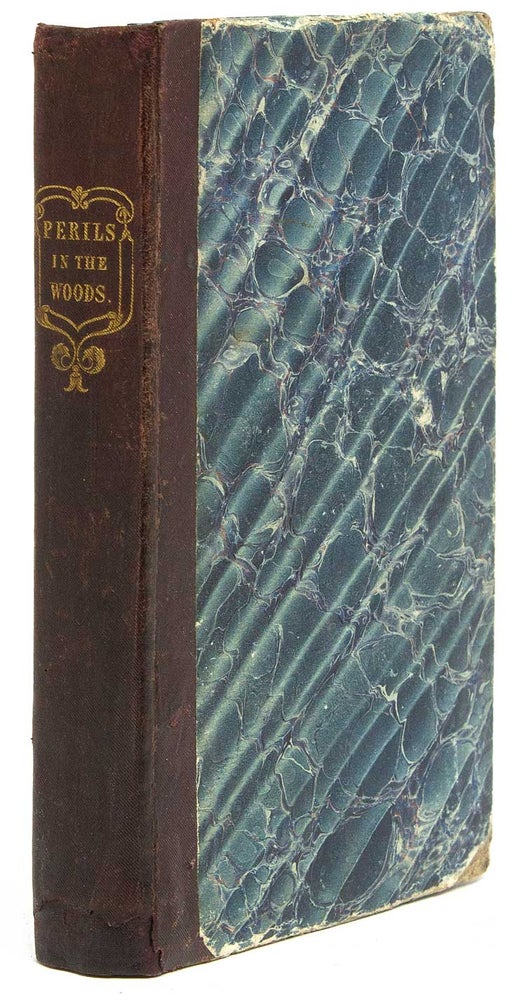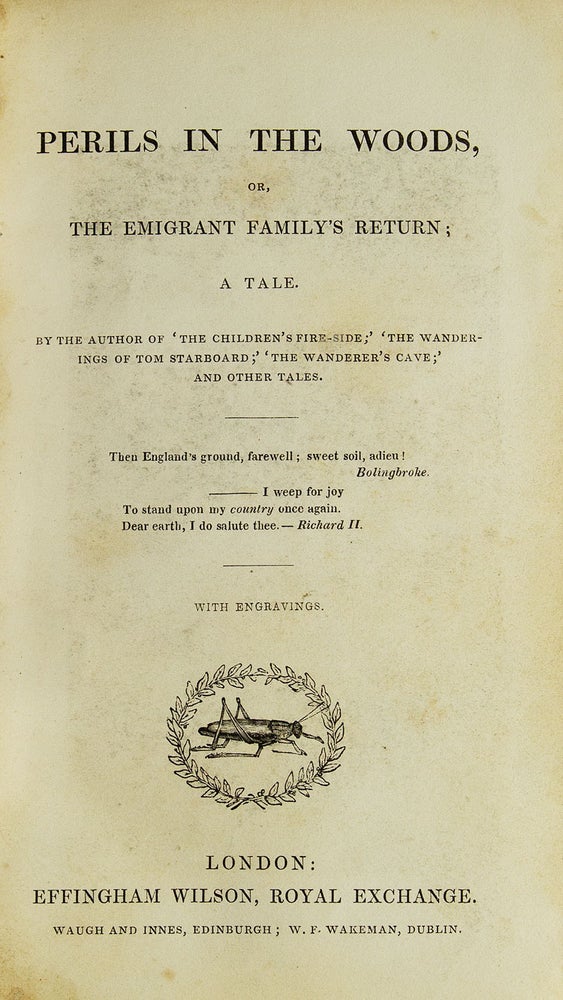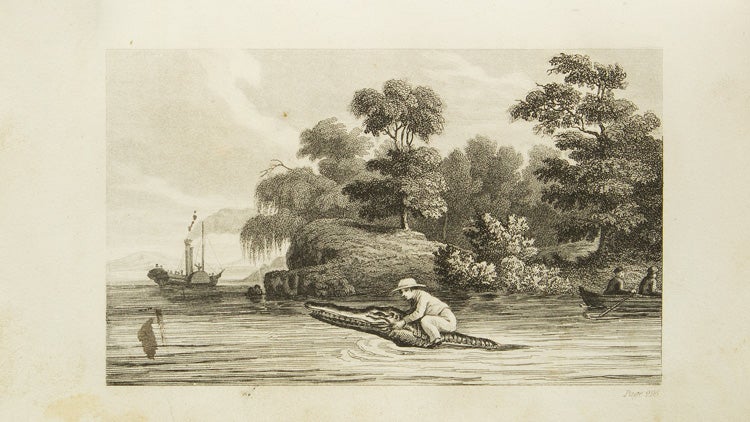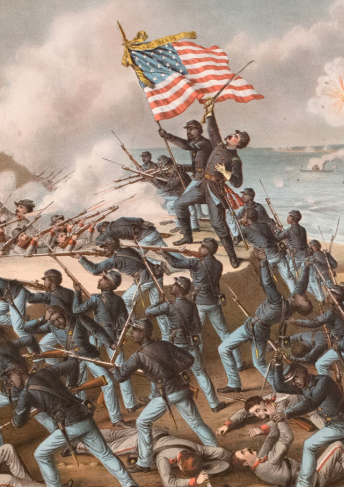Perils in the Woods, or, the Emigrant Family's Return; a Tale.
London: Effingham Wilson, Waugh & Innes of Edinburgh and W.F. Wakeman of Dublin, N.d. [1835].
Price: $1,500.00
About the item
First edition. Engraved and etched frontispiece and 3 plates. vii, [i], 344 pp., with half-title. Printed by John Wertheimer. 12mo. Contemporary dark purple cloth-backed marbled paper-covered boards, titled in gilt on spine, cream-glazed endpapers, red stained edges. Corners bumped and rubbed, repair to foot of spine, extremities rubbed, pp. 169-190 misbound following p. 216, tear to inner blank margin of pp. 119-120, repaired tear from inner margin into text with no loss to pp. 121-2, small tears to lower blank margin of pp. 167-8, occasional light toning or surface soiling. OCLC 79416277 (2 copies: Nat. Lib. Of Scotland & Cambridge Univ. Library) & 504347859 (2 copies: BL & Univ. of St. Andrews). Provenance: R.C. Trollope (front free endpaper with early presentation inscription from grandmother and small ink ownership stamp).
Item #312982
Mrs. Towers, "a writer of genuine ability" (Stuart M. Sperry) was the daughter of John Keats’s teacher, John Clarke, and the sister of Charles Cowden Clarke, Keats’s school-friend and mentor. Her husband, [George] John Towers, was also a writer of note.
First (and only) edition of this rare work for adolescents, which, in its broad outlines, resembles the emigration of John Keats's brother George and his wife Georgiana to the United States. The connections between the novel and the real-life experiences of George Keats is explored in Stuart M. Sperry's essay "Isabella Jane Towers, John Towers, and Keats." The story is related "in England, after the Pemberton family’s return to their native land, it recounts the hardships they undergo as emigrants for two years in an Indiana farming settlement on the banks of the 'Tippicana' river, a tributary of the Wabash. During their trip by wagon overland and their subsequent struggle to establish themselves, the family suffers from the depredations of thieves and Indians, the loss of their possessions, and the terrors of the elements. Some of the episodes are quite farfetched, though Mrs. Towers has studied a number of published sources, detailed in the appendices [which includes passages from works by J. Audubon, Baron Cuvier and others], in the effort to make, as she claims in her preface, her account as true to life as possible.
"Now even in this unlikely work one senses the possibility of a connection with [John] Keats, or at least with his brother and sister-in-law, George and Georgiana. The route the Pembertons take, leaving Liverpool by ship, landing in Philadelphia, and proceeding westward by way of Pittsburgh, is the same George and Georgiana (and no doubt many other settlers) followed. … [like the Pembertons, George was not initially successful and returned to England in 1820 to raise more money].
"Why was Isabella Towers moved to write what was, properly speaking her only real novel about the United States, a country she had never seen? Did her interest in the old boys of her father’s school and in John Keats in particular extend equally to his brother George, whom she must also have known? Did George’s misfortunes in the United States enter into her gloomy view of that country? It is unlikely that we shall ever have settled answers to these questions. However, any discussion of Mrs. Towers and her work in its relation to the Keats family would be incomplete without raising them" (Stuart M. Sperry. "Isabella Jane Towers, John Towers, and Keats" in Keats-Shelley Journal, 1979, vol. 28, pp. 55-57).





